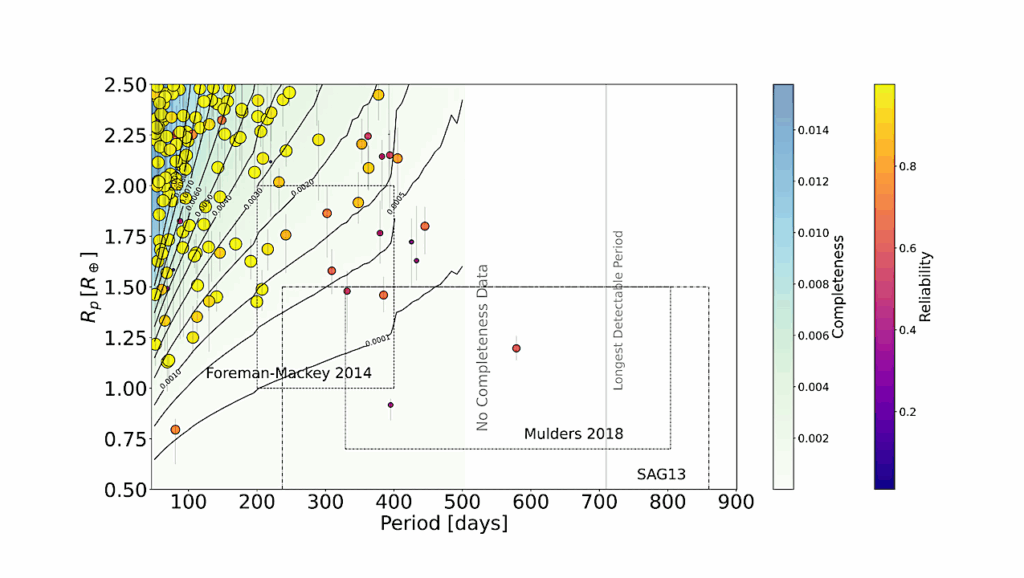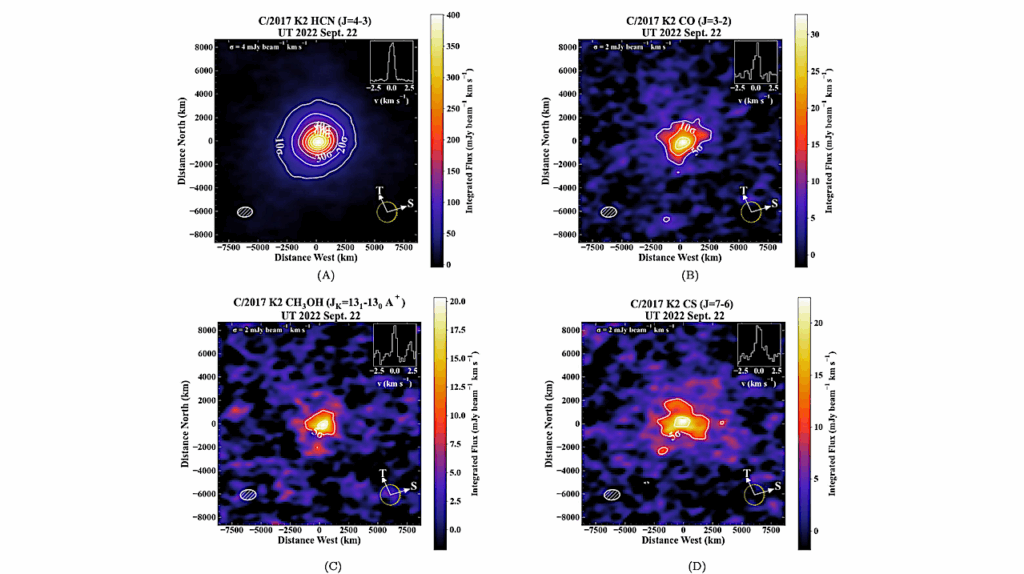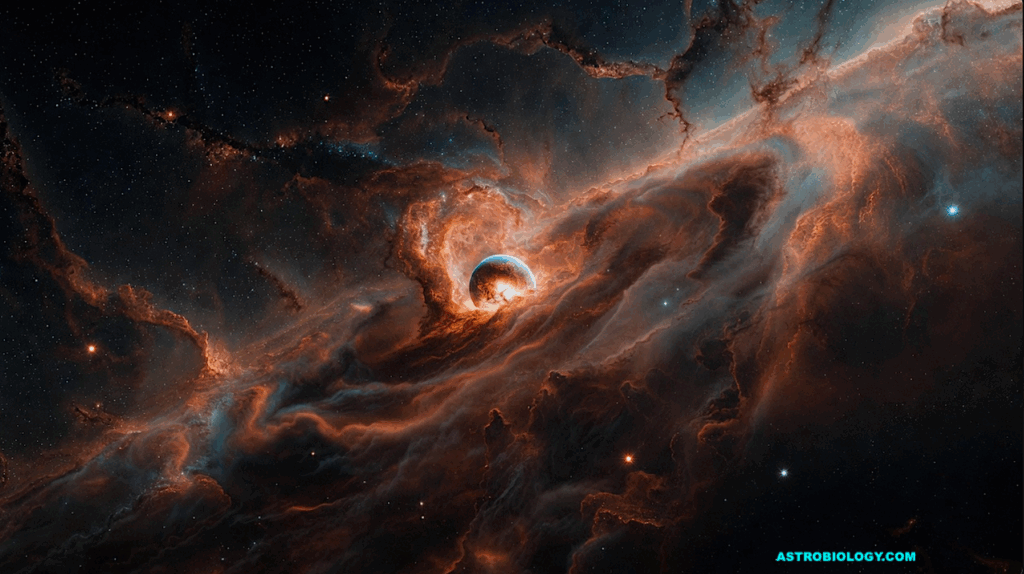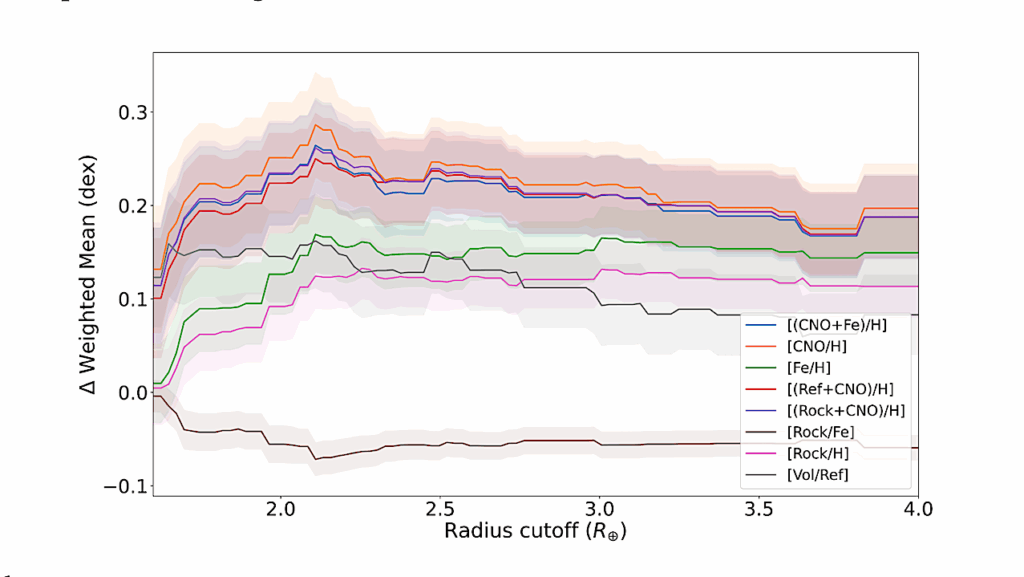MINDS: JWST/NIRCam Imaging Of The Protoplanetary Disk PDS 70
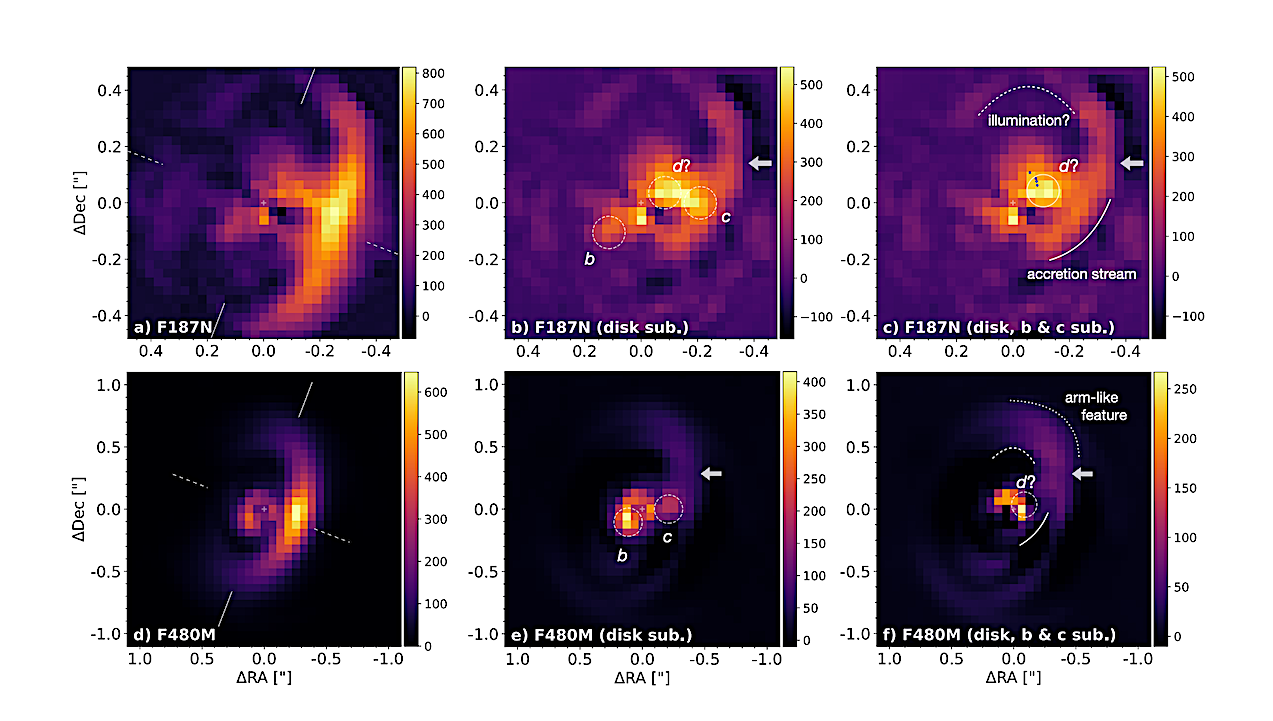
Context. Two protoplanets have recently been discovered within the PDS 70 protoplanetary disk. JWST/NIRCam offers a unique opportunity to characterize them and their birth environment at wavelengths difficult to access from the ground.
Aims. We aim to image the circumstellar environment of PDS 70 at 1.87 μm and 4.83 μm, assess the presence of Pa-α emission due to accretion onto the protoplanets, and probe any IR excess indicative of heated circumplanetary material. Methods. We obtain non-coronagraphic JWST/NIRCam images of PDS 70 within the MINDS (MIRI mid-INfrared Disk Survey) program.
We leverage the Vortex Image Processing (VIP) package for data reduction, and develop dedicated routines for optimal stellar PSF subtraction, unbiased imaging of the disk, and protoplanet flux measurement in this type of dataset. A radiative transfer model of the disk is used to disentangle the contributions from the disk and the protoplanets.
Results. We re-detect both protoplanets and identify extended emission after subtracting a disk model, including a large-scale spiral-like feature. We interpret its signal in the direct vicinity of planet c as tracing the accretion stream feeding its circumplanetary disk, while the outer part of the feature may rather reflect asymmetric illumination of the outer disk.
We also report a bright signal consistent with a previously proposed protoplanet candidate enshrouded in dust, near the 1:2:4 mean-motion resonance with planets b and c. The 1.87 μm flux of planet b is consistent with atmospheric model predictions, but not that of planet c. We discuss potential origins for this discrepancy, including significant Pa-α line emission. The 4.83 μm fluxes of planets b and c suggest enshrouding dust or heated CO emission from their circumplanetary environment.
V. Christiaens, M. Samland, Th. Henning, B. Portilla-Revelo, G. Perotti, E. Matthews, O. Absil, L. Decin, I. Kamp, A. Boccaletti, B. Tabone, G.-D. Marleau, E. F. van Dishoeck, M. Güdel, P.-O. Lagage, D. Barrado, A. Caratti o Garatti, A. M. Glauser, G. Olofsson, T. P. Ray, S. Scheithauer, B. Vandenbussche, L. B. F. M. Waters, A. M. Arabhavi, S. L. Grant, H. Jang, J. Kanwar, J. Schreiber, K. Schwarz, M. Temmink, G. Östlin
Comments: 6+11 pages, 3+10 figures (text+appendix). Accepted for publication in A&A
Subjects: Earth and Planetary Astrophysics (astro-ph.EP); Solar and Stellar Astrophysics (astro-ph.SR)
Cite as: arXiv:2403.04855 [astro-ph.EP] (or arXiv:2403.04855v1 [astro-ph.EP] for this version)
Submission history
From: Valentin Christiaens
[v1] Thu, 7 Mar 2024 19:09:42 UTC (1,465 KB)
https://arxiv.org/abs/2403.04855
Astrobiology



